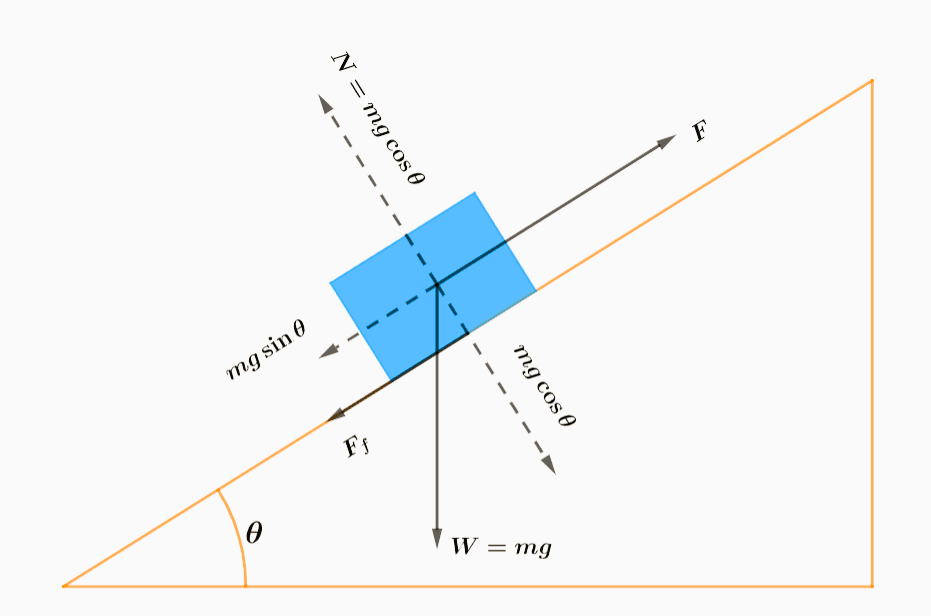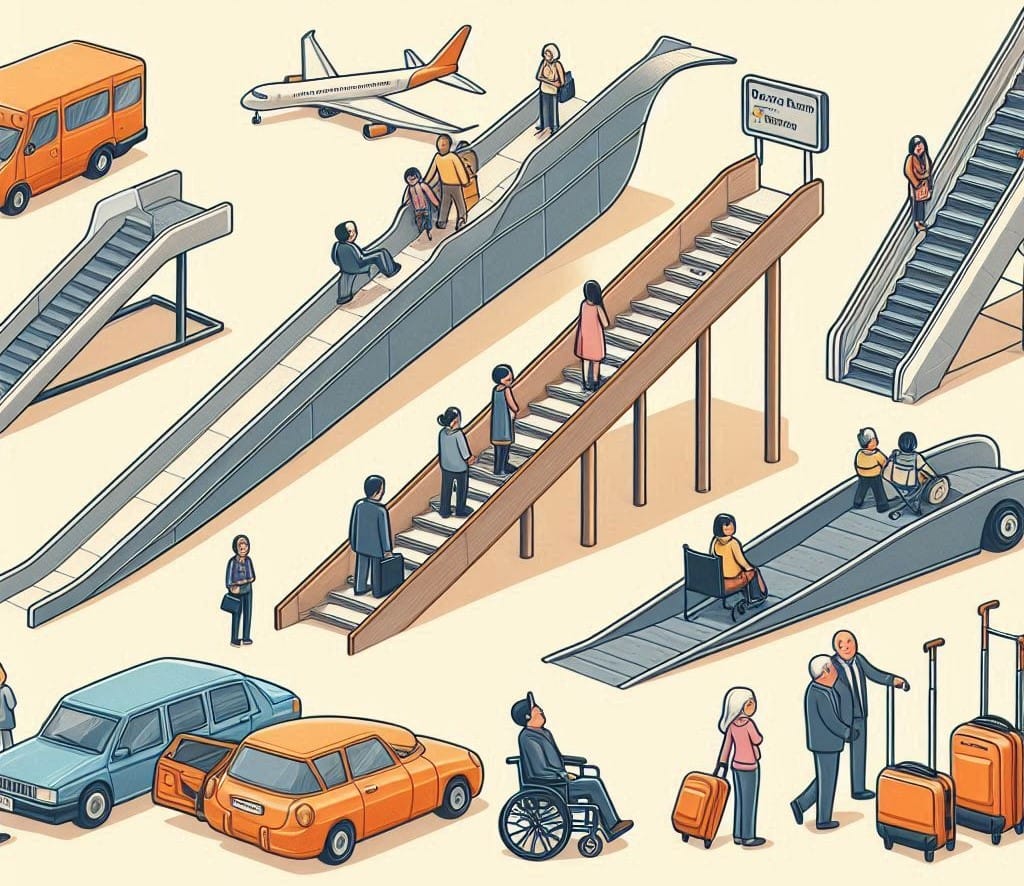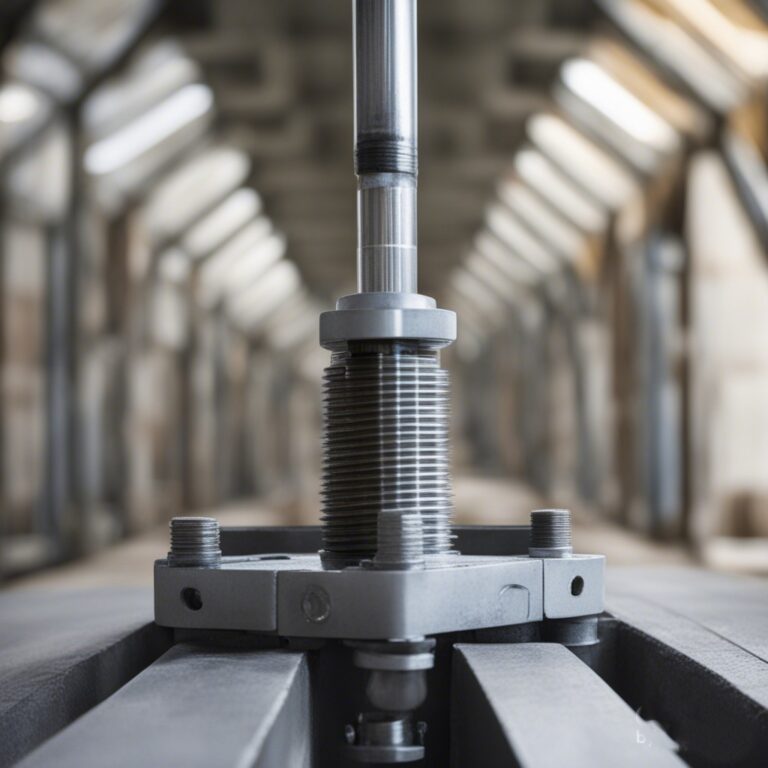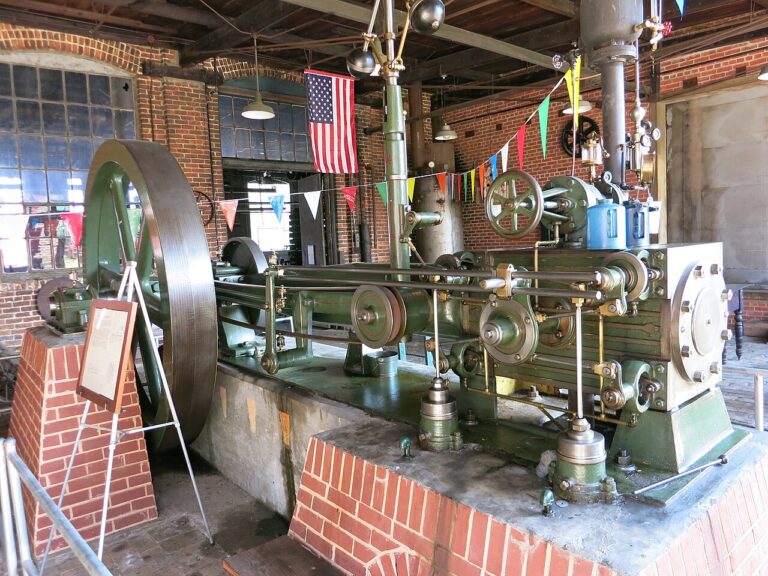Introduction: A Simple Tool That Changed the World
Ever used a ramp to push a heavy cart into a truck? You’ve already used one of the most fundamental tools in physics — the inclined plane.
Although simple in appearance, the inclined plane is a powerful invention that has helped humans move massive objects long before the invention of modern engines or cranes. From ancient civilizations building pyramids to modern warehouses loading goods, inclined planes silently reduce human effort in countless scenarios.
Yet, despite their everyday presence, inclined planes are often overlooked. They’re not flashy or high-tech, but their role is undeniably crucial — and timeless.

In this post, we’ll break down:
- What is an inclined plane, and how it works
- A precise but simple inclined plane definition
- Fascinating real-world examples you see daily
- The science and physics behind its efficiency
- And how this simple machine continues to shape engineering and education today
Whether you’re a student, engineer, or just a curious learner, by the end of this guide, you’ll never look at a ramp the same way again.
What Is an Inclined Plane?
Let’s start with the basics — and build from there.
✅ Inclined Plane Definition:
An Inclined ramp is a flat surface set at an angle (other than 90°) to a horizontal surface. It helps raise or lower objects with less effort by allowing them to move along the slope instead of lifting them straight up.

In simpler words:
It’s a slope — like a ramp — that lets you push or roll something heavy to a higher (or lower) point without lifting it directly.
📜 A Classical Simple Machine
The inclined plane is one of the six classical simple machines, along with:
These machines form the foundation of mechanical engineering and have been used by civilizations for thousands of years. Perhaps the most straightforward of all simple machines, the Inclined ramp delivers surprising strength through simplicity.
🆚 Vertical Lift vs Gradual Slope: Why It Matters
Imagine a 100 kg box sitting on the ground, ready to be loaded into a truck. You face a decision between two approaches.
- Lift it vertically — which means applying all your strength at once
- Push it up a ramp (inclined plane) — which spreads the effort over distance
While both methods do the same work (moving the object from point A to B), the ramp reduces the effort required at any given moment by changing how the force is applied. This is why ramps, stairs, and slides are everywhere.
💡 Why It Works: Less Force, More Distance
The core advantage of an inclined plane is that it spreads effort across a longer distance, trading high force for a manageable push or pull.
The steeper the incline, the more force needed. The gentler the slope, the easier it is — though it takes more time or space. This principle is what makes Inclined ramps ideal in:
- Construction
- Shipping & logistics
- Accessibility ramps
- Highway designs and bridge approaches
- Industrial material handling
📘 Bonus Insight: More Than Just a Ramp
Inclined ramps aren’t just ramps. They’re also integrated into tools and machines:
- The screw is a twisted Inclined ramp
- Tools like knives and axes are examples of wedges — essentially inclined planes that move through materials.
- Hills and natural slopes follow the same physical laws
Understanding the inclined plane definition gives us a framework to understand a wide range of mechanical designs.
How Inclined Planes Work: Physics Behind the Simplicity
On the surface, an inclined plane may look like a basic ramp — but behind its simplicity lies a powerful lesson in physics. Understanding how it works reveals why this simple machine has stood the test of time in engineering, construction, and everyday tasks.
Let’s break it down without getting too technical — just enough physics to grasp the genius behind the slope.
🔧 The Role of Mechanical Advantage (MA)
The real power of an inclined plane comes from its mechanical advantage — a measure of how much easier it makes your work.
Mechanical Advantage (MA) tells us how much an inclined plane reduces the input force needed to move an object.
✅ Formula:
MA = Length of the Slope / Height of the Rise
This means:
- The longer and less steep the ramp, the more mechanical advantage it provides.
- A short, steep ramp offers less help — it still reduces effort, but not by much.
An Inclined ramp doesn’t lessen the total work required — it simply distributes the effort over a longer distance, making the task feel easier.
⚖️ The Force Trade-Off: Distance vs Effort
Here’s the key idea:
You trade force for distance.
That means: instead of lifting something 1 meter straight up (requiring a strong force all at once), you push it up a 3-meter ramp that slowly rises 1 meter. You apply less force, but over a longer path.
This principle is critical in:
- Accessibility ramps (to reduce slope for wheelchair users)
- Truck loading ramps (so one person can push heavy cargo)
- Mountain roads (which wind back and forth rather than climbing directly)
📐 Sample Calculation: Moving a 100 kg Load up a 30° Ramp
Let’s take a real-world scenario.
You have a 100 kg object and a ramp that rises at a 30° angle over a 2-meter height.
Step 1: Find Length of Ramp

Step 2: Apply MA Formula

Result: You reduce the force needed by half!

Instead of needing full force to lift 100 kg (≈980 N), you only need about 490 N on the ramp — though you’ll need to apply it over a 4-meter push instead of lifting 2 meters vertically.
📊 Real Forces on an Inclined Plane
Several forces come into play when you push an object up an Inclined ramp. Here’s what acts on the object:
| Force | Description |
|---|---|
| Weight (mg) | Pulls the object straight down due to gravity |
| Normal Force | Acts perpendicular to the ramp, supporting the object |
| Friction | Resists motion, depends on ramp surface and object material |
| Applied Force | The force you exert to push the object up the ramp |
| Parallel Component of Gravity | Pulls the object back down the ramp, = mg·sin(θ) |
🚧 Don’t Forget Friction
While inclined planes help reduce effort, friction can work against you:
- On smooth surfaces, friction is low — but risk of slipping is higher
- On rough surfaces, friction adds resistance — but improves grip
In real-world applications like moving crates or using wheeled carts, engineers must balance slope angle and friction to ensure safety and usability.
🧠 Recap
- An Inclined ramp lets you use less force to move heavy loads — thanks to mechanical advantage
- The longer and gentler the ramp, the easier the task becomes
- Forces like gravity, friction, and normal force all affect how efficiently an inclined plane works
- Understanding these basics gives insight into construction, road design, industrial equipment, and much more
Real-World Inclined Plane Examples
You might think of Inclined ramps as just “ramps” used in science class, but in truth, they’re everywhere — in homes, cities, factories, airports, even in nature. They help us lift, move, roll, slide, or guide objects with less effort.
Let’s explore how this simple machine plays a critical role in daily life, modern engineering, and even in the natural world.
🏠 a) Everyday Inclined Plane Examples
Inclined planes surround us in everyday spaces — often going unnoticed, even as they make our lives easier and safer.
- Wheelchair Ramps
- Allow accessibility for differently-abled individuals
- Required in buildings under modern building codes
- Designed with specific slope angles to ensure safety and ease of use
- Slides
- Found in playgrounds — an Inclined ramp designed for fun
- Children slide down due to gravity acting along the slope
- Staircases
- Essentially a redesigned inclined plane, it divides the slope into smaller, more navigable steps.
- Used to elevate people between floors with balanced effort

- Driveway Ramps
- Used to ease cars over curbs or onto garages with elevation difference
- Especially important for vehicles with low ground clearance
- Luggage Ramps at Airports
- Help move heavy suitcases between baggage areas and conveyor belts
- Reduce physical strain and automate part of the process
- Sloped Conveyor Belts
- Used in grocery stores, airports, and packaging plants
- These conveyor belts use Inclined ramps in motion to transport items smoothly up or down.
✅ These are all practical inclined plane examples that reduce the physical effort needed to move objects in everyday life.
🏗️ b) Industrial & Engineering Uses
Inclined planes play a critical role in heavy industries and construction, allowing the movement of materials, cargo, and equipment in safer, more controlled ways.
- Truck Loading Ramps
- Help roll heavy packages or machinery into delivery trucks
- Often combined with wheeled carts to make lifting safer and more ergonomic for workers.
- Scaffolding Access Ramps
- Provide safe, inclined access for construction workers on elevated sites
- Especially useful for transporting equipment via wheeled carts
- Aircraft Cargo Loaders
- Hydraulic or mechanical ramps help move cargo into airplane bays
- Designed to handle high loads while minimizing manual lifting
- Warehouse and Factory Ramps
- Used to shift pallets, barrels, or raw materials between different floor levels
- Often paired with forklifts and trolleys for seamless logistics
Engineers design these inclined plane examples for efficiency, safety, and ergonomic advantage in fast-paced environments.
🌍 c) Natural Inclined Planes
Nature, too, gives us plenty of organic inclined planes — some gentle, some dangerously steep. Understanding these natural slopes helps in geography, civil engineering, and even disaster management.
- Hills and Mountain Slopes
- Classic examples of large-scale Inclined ramps
- Roads and railways are built as switchbacks (zigzagging) to reduce slope steepness and make transport easier
- Riverbeds with Gentle Gradients
- Rivers flow from higher to lower elevations over sloped terrain
- The incline of the riverbed controls the speed of water flow and erosion
- Landslides and Rockfalls
- Debris or rock can rapidly slide down inclined landforms, triggered by gravity or weather.
- These can be understood — and prevented — using the same physics that govern Inclined ramps
These natural inclined plane examples help shape landscapes and influence how we build roads, cities, and flood protection systems.
🖼️ Pro Tip for Visual Engagement:
🔹 Create a collage or infographic showing:
- A side-by-side of a playground slide, airport ramp, mountain switchback, and truck loader
- Use labels like “Everyday Use,” “Industrial,” and “Natural”
📌 Recap: Inclined Planes Are Everywhere
From kids’ slides to mountain passes, the inclined plane is one of the most widely used simple machines in human history — and its relevance is far from over.
Whether you’re wheeling luggage into an airport or designing a cargo ramp for a jet, you’re relying on the same physical principle first used to build ancient pyramids.
Benefits of Using Inclined Planes
Although simple in design, the inclined plane offers a wide range of mechanical and practical benefits — many of which have shaped how humans move, build, and work throughout history. Let’s explore why this simple machine remains relevant in both ancient and modern contexts.
💪 Reduces Muscle Strain and Engine Power
One of the key strengths of an Inclined ramp is how it transforms hard labor into manageable effort. Instead of lifting a heavy object straight up — which requires a lot of force — the Inclined ramp allows you to exert less force over a longer distance.
- For manual laborers, this means less fatigue and lower risk of injury.
- For machinery, it means reduced fuel or electricity consumption, extending the life of engines and motors.
Example: Using a ramp to roll a barrel into a truck instead of lifting it with brute force.
🏗️ Enables Heavy Lifting with Minimal Equipment
Inclined planes allow workers to move large, heavy objects without relying on cranes, lifts, or powered tools.
- Farmers use wooden planks as ramps to load sacks of grain
- Small businesses use foldable ramps to move goods in and out of stores
This makes the Inclined ramp incredibly valuable in low-resource or rural settings, where heavy machinery may not be available.
🧑🦽 Safer than Vertical Lifting
Vertical lifting carries a high risk of:
- Dropping objects
- Slipping or falling while carrying weight
- Straining muscles or causing back injuries
In contrast, inclined planes distribute weight gradually, making it easier to:
- Maintain balance
- Use carts or trolleys for added safety
- Control the object’s speed and motion
This is why wheelchair ramps and construction site access ramps are required in building safety codes.
🛞 Supports Wheel-Based Movement
The Inclined ramp enables the efficient use of wheels — one of the most important inventions in human history.
By creating a slope, ramps allow carts, trolleys, luggage rollers, and hand trucks to:
- Move up or down elevations
- Transition from one height to another with ease
- Reduce wear and tear on both the user and equipment
The synergy between inclined planes and wheels is what makes logistics, travel, and transport systems smooth and efficient.
🏛️ Ancient Engineering Marvels
Inclined ramps were key tools in ancient construction.
One of the most famous examples is the Pyramids of Giza in Egypt. Historians and engineers believe that giant stone blocks, some weighing over 2 tons, were moved using earthen ramps — long Inclined ramps built of sand and stone.
Without cranes or engines, ancient builders used Inclined ramps to redirect force, allowing laborers to drag or roll heavy stones upward gradually.
📊 Summary Table: Key Benefits of Inclined Planes
| Benefit | Real-Life Use |
|---|---|
| Reduces effort | Loading cargo onto trucks |
| Increases safety | Wheelchair access in buildings |
| Requires minimal tools | Rural or remote goods transport |
| Enables wheel movement | Using hand trucks in warehouses |
| Builds without engines | Ancient pyramid construction |
Inclined Plane in Education & STEM Learning
In addition to its practical applications, the Inclined ramp plays an essential role in STEM (Science, Technology, Engineering, and Mathematics) education. Its simplicity makes it ideal for teaching fundamental principles of physics and mechanics — even to young learners.
🧪 Inclined Planes in School Science Experiments
Inclined planes are a staple in classroom physics demonstrations because they help students understand:
- Gravity and its directional components
- The effect of slope on speed
- The difference between input and output force
Example: Rolling balls of different weights down a sloped ramp to measure acceleration or distance.
🧠 DIY STEM Activity: Build a Simple Ramp
Materials Needed:
- Cardboard sheet
- Books or blocks to prop it up
- Toy car or marble
- Measuring tape or ruler
Experiment Idea:
- Build a ramp and measure how far the object rolls.
- Change the slope angle and test how the distance or speed changes.
- Record results and analyze how gravity and friction play roles.
This project teaches:
- Potential vs kinetic energy
- Effect of angle on acceleration
- Real-world applications of simple machines
🧲 Concepts Learned Through Inclined Planes
| Concept | Inclined Plane Application |
|---|---|
| Potential vs Kinetic Energy | Conversion of energy as object moves down slope |
| Gravity vs Friction | Gravity pulls down; friction resists motion |
| Force Components | Vertical and horizontal force breakdown on slopes |
🔧 Inclined Planes in STEM Kits
Many modern STEM kits combine inclined planes with:
- Pulleys (for compound machines)
- Levers (to amplify lifting)
- Sensors (to measure force, time, motion)
These hands-on kits are used in:
- Science fairs
- Maker clubs
- Robotics classes
- Engineering summer camps
This helps students understand how real-world tools work — from wheelchair ramps to rockets — starting with a simple slope.
❓Q&A
Q: What is an inclined plane and why is it useful in education?
A: An inclined plane is a sloped surface that helps move objects up or down more easily. It’s used in education to teach force, motion, energy conversion, and the value of simple machines through experiments and STEM kits.
Inclined Planes vs Other Simple Machines
To truly understand the power of an Inclined ramp, it’s helpful to compare it with other simple machines that share similar mechanics — but serve different purposes.
Two of the most closely related machines are the wedge and the screw. All three machines share one thing in common: they redirect force to make work easier. Yet, they do so in uniquely clever ways.
🔺 Inclined Plane vs Wedge vs Screw
🔹 Inclined Plane
A stationary slope that reduces the force needed to move an object to a higher or lower elevation.
- Example: A ramp used to roll cargo into a truck
- It spreads force over a longer distance, requiring less effort at a time
🔹 Wedge
A moving inclined plane that converts force applied from above into force directed outward.
- Example: An axe blade splitting wood
- Instead of lifting, the wedge works by splitting materials apart, using sharp edges and motion
🔹 Screw
A spiral-shaped inclined plane wrapped around a cylinder or shaft.
- Example: A jackscrew or bottle cap
- Converts rotational force into vertical or horizontal movement, often to lift or compress objects
🧾 Comparison Table
| Machine | Energy Conversion | Common Use |
|---|---|---|
| Inclined Plane | Converts input force into lifting motion | Ramps, conveyor systems |
| Wedge | Converts force into splitting action | Axe, chisel, knife |
| Screw | Converts rotational force into linear motion | Jackscrews, vices, drill bits |
This comparison makes it easier for students and readers to see the conceptual relationship between different simple machines — and how real-world tools often combine multiple machines in one (e.g. a screw with a wedge tip).
Common Misconceptions About Inclined Planes
Many students — and even adults — carry misunderstandings about how Inclined ramps work. These misconceptions can block deeper understanding and limit innovation in applying this simple machine. Let’s clear them up:
❌ Misconception 1: “Inclined planes always reduce effort”
While Inclined ramps generally make lifting easier, they don’t magically reduce all effort.
- If the ramp is too steep, it may still require a lot of force to push an object up
- Friction between surfaces (e.g., a rough ramp or sticky wheels) increases resistance
- If the slope is too steep, ramps can become hazardous for both wheeled objects and people who need accessible pathways
Reality: The slope angle and friction both impact how effective an Inclined ramp is.
❌ Misconception 2: “They’re only used in ramps”
Many people think inclined planes are just for wheelchair ramps or loading docks — but they’re everywhere:
- The blade of a knife or scissors (a wedge)
- A spiral staircase (like a screw)
- Slides, sloped conveyor belts, and even hills used in transportation routes
Reality: The Inclined ramp is a foundational concept that appears in tools, natural landscapes, and machines — not just ramps.
❌ Misconception 3: “Steeper is always better”
It might seem like making a ramp shorter (and steeper) saves time or space — but it creates more force demand.
- In accessibility design, gentler slopes are preferred so people with wheelchairs or carts can move safely
- Longer ramps require less effort, even if they take more space
Reality: There’s always a trade-off between space and ease. Engineers carefully calculate slope ratios based on user needs and environment.
Conclusion: Why Inclined Planes Still Matter
The inclined plane may be the simplest of all machines, but it remains one of the most practical and powerful tools humans have ever invented.
From ancient wonders like the Pyramids of Giza to modern wheelchair ramps, this simple slope helps us move more efficiently, safely, and with less energy. Its versatility — seen in tools, machines, and nature — proves just how deeply embedded it is in our lives.
🙌 Final Thoughts
Next time you:
- Walk up a staircase
- Push a suitcase onto a ramp
- Picture a construction crew rolling heavy barrels up a ramp into a truck…
…you’re witnessing the power of the inclined plane in action.
📣 Call to Action
👉 Try a DIY experiment: Build your own Inclined ramp using cardboard and test it with marbles or toy cars.
👉 Leave a comment below sharing other inclined plane examples you’ve seen in your daily life.
👉 Read next: Our related blogs on the Wedge and the Screw — to complete your understanding of these force-multiplying tools.






